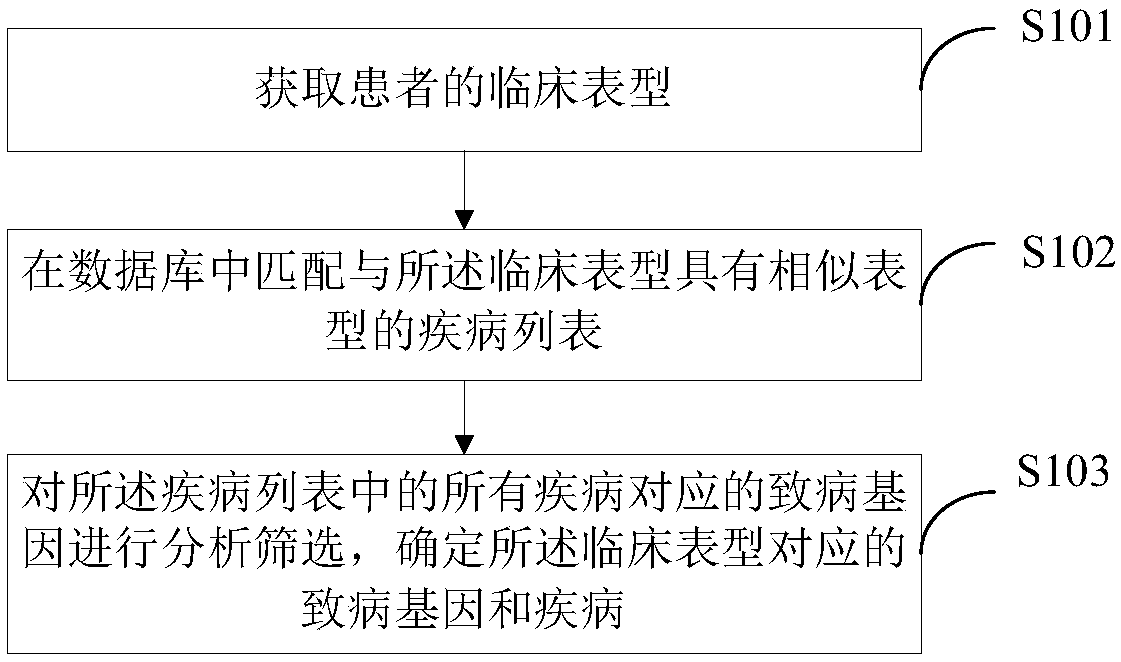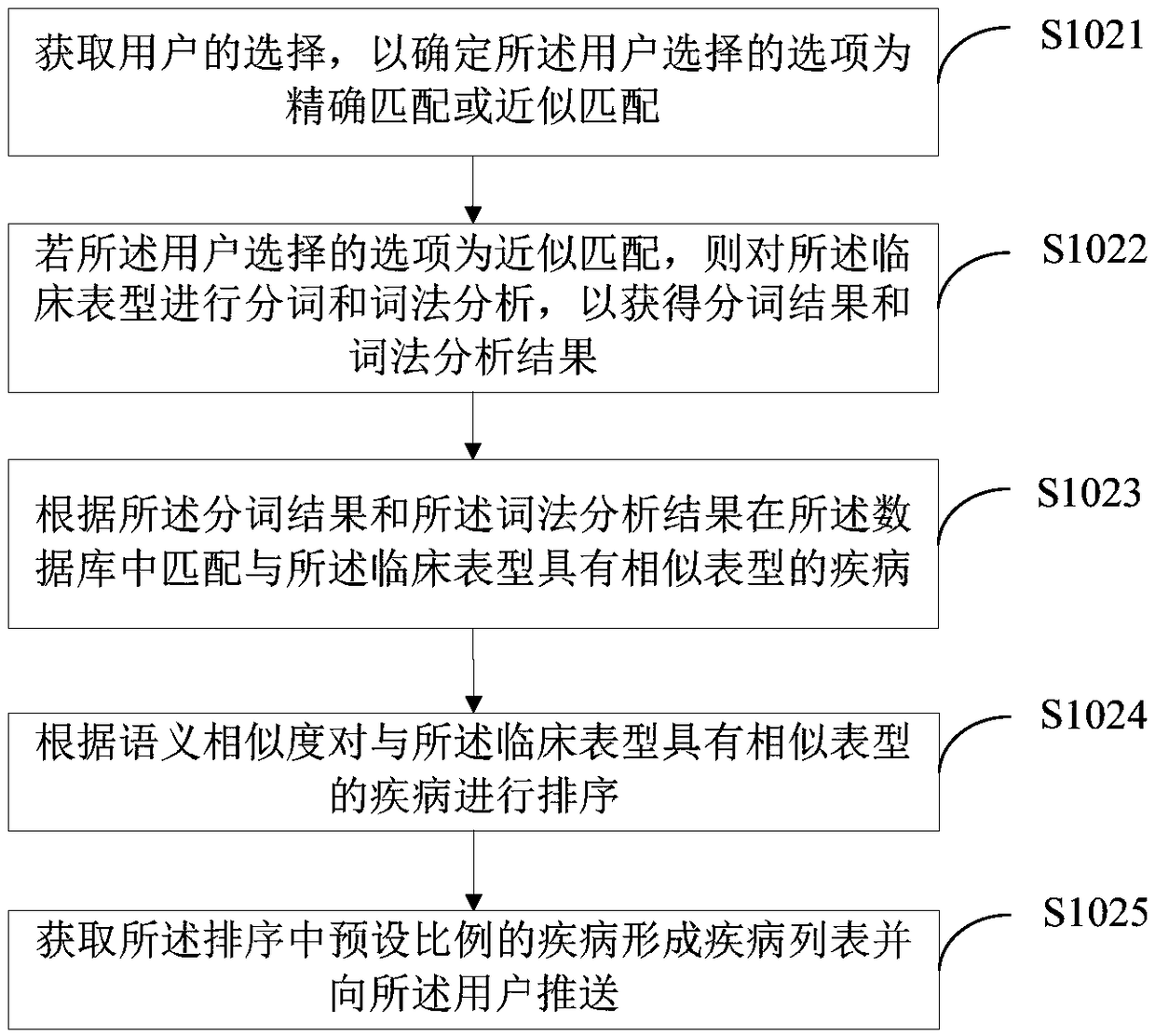Disease diagnosis method and device and terminal equipment
A technology for disease diagnosis and disease, applied in medical automated diagnosis, instrumentation, genomics, etc., can solve problems that consume time and energy of doctors and patients, and achieve the effect of improving the efficiency of diagnosis and saving time
- Summary
- Abstract
- Description
- Claims
- Application Information
AI Technical Summary
Problems solved by technology
Method used
Image
Examples
Embodiment 1
[0042] Such as figure 1 As shown, this embodiment provides a disease diagnosis method, which can be applied to terminal devices such as mobile phones, PCs, and tablet computers. The disease diagnosis method provided in this embodiment includes:
[0043] S101. Obtain the clinical phenotype of the patient.
[0044] In a specific application, the clinical phenotype of the current patient is obtained for subsequent analysis and judgment of the patient's disease based on the clinical phenotype.
[0045] S102. Match a list of diseases having a phenotype similar to the clinical phenotype in the database.
[0046] In a specific application, a list of diseases with similar phenotypes is found in the database according to the above clinical phenotypes (wherein, the diseases include common diseases and genetic diseases. In this embodiment, the judgment process for genetic diseases is more applicable. ) to perform the first step of screening, narrowing the scope of subsequent judgment ...
Embodiment 2
[0054] Such as figure 2 As shown, this embodiment is a further description of the method steps in the first embodiment. In this embodiment, the step S102 includes:
[0055] S1021. Obtain a user's selection to determine whether the option selected by the user is an exact match or an approximate match.
[0056] In a specific application, the user's choice is obtained (by providing the user with a selection page including exact match, approximate match or other search matching options) to determine whether the option selected by the user is an exact match or an approximate match. It should be noted that the users include all users who use the current terminal equipment, including doctors, nurses, other medical staff, patients or relatives who have a legal relationship with the patients. In this embodiment, it is set that the user using the current terminal device is a doctor.
[0057] S1022. If the option selected by the user is the approximate match, perform word segmentatio...
Embodiment 3
[0071] Such as image 3 As shown, this embodiment is a further description of the method step S1022 in the second embodiment. In this embodiment, step S1024 includes:
[0072] S10241. Calculate the semantic similarity between the clinical phenotype and the phenotype of a disease having a similar phenotype to the clinical phenotype;
[0073] In a specific application, the semantic similarity between all descriptive words in the clinical phenotype and any clinical phenotype descriptive vocabulary of a disease having a similar phenotype to the clinical phenotype is calculated.
[0074] S10242. Rank the diseases having similar phenotypes to the clinical phenotype according to the semantic similarity.
[0075] In a specific application, the diseases are sorted according to the magnitude of the calculated semantic similarity. Among them, diseases with similar phenotypes to the above-mentioned clinical phenotypes may include one or more diseases, so as to further detect diseases w...
PUM
 Login to View More
Login to View More Abstract
Description
Claims
Application Information
 Login to View More
Login to View More - R&D
- Intellectual Property
- Life Sciences
- Materials
- Tech Scout
- Unparalleled Data Quality
- Higher Quality Content
- 60% Fewer Hallucinations
Browse by: Latest US Patents, China's latest patents, Technical Efficacy Thesaurus, Application Domain, Technology Topic, Popular Technical Reports.
© 2025 PatSnap. All rights reserved.Legal|Privacy policy|Modern Slavery Act Transparency Statement|Sitemap|About US| Contact US: help@patsnap.com



